Despite setting up camp on an uneven surface, I managed to get some much-needed sleep overnight since I was running on fumes by this point. I rose from my slumber with the sun at 5.30 am feeling excited to reach my destination.
Just as I was preparing breakfast, I suddenly noticed lots of big ants crawling all over my backpack. I reflexively tried to brush them off but that just knocked them into the tent and soon breakfast was abandoned.
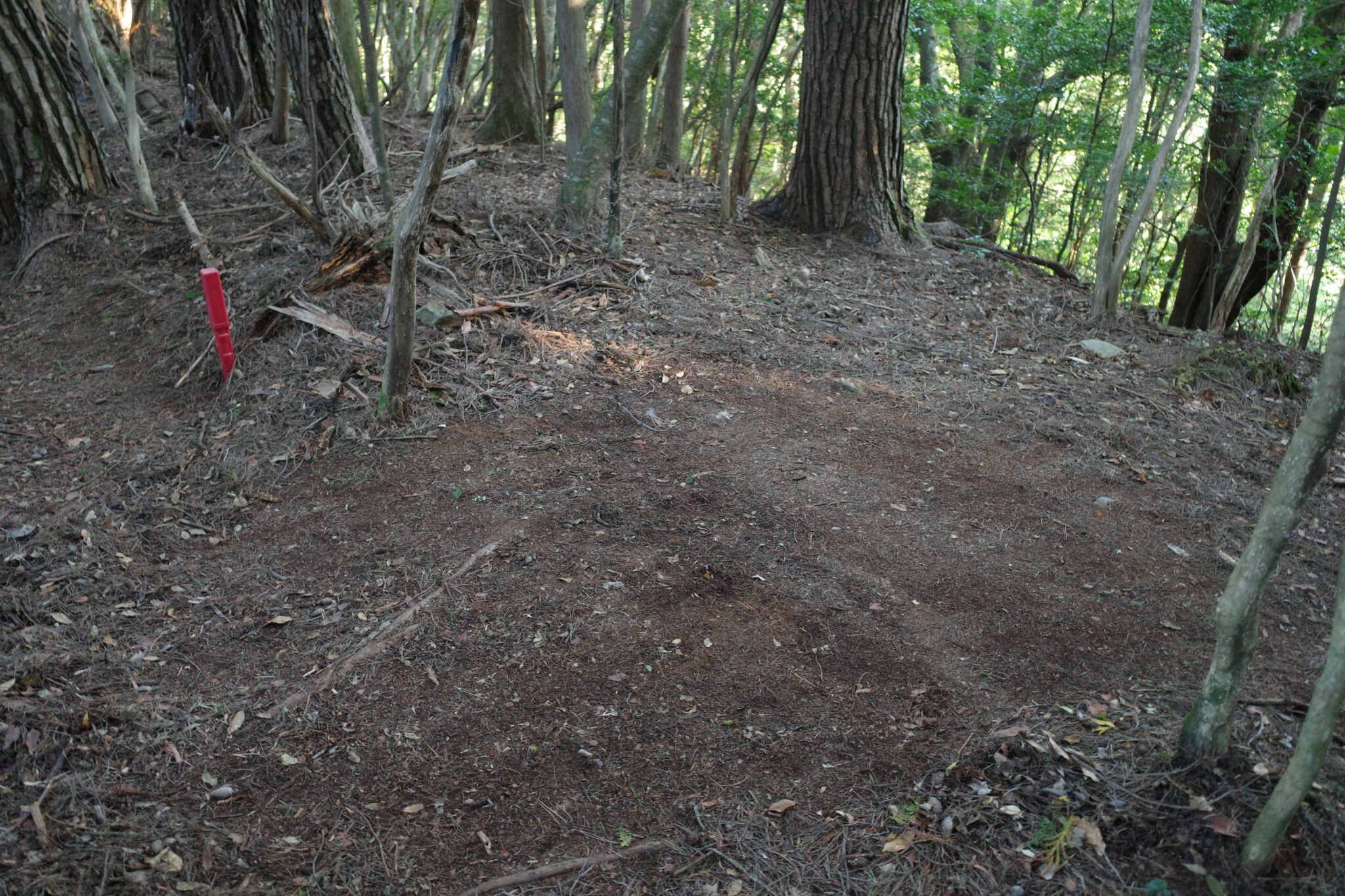
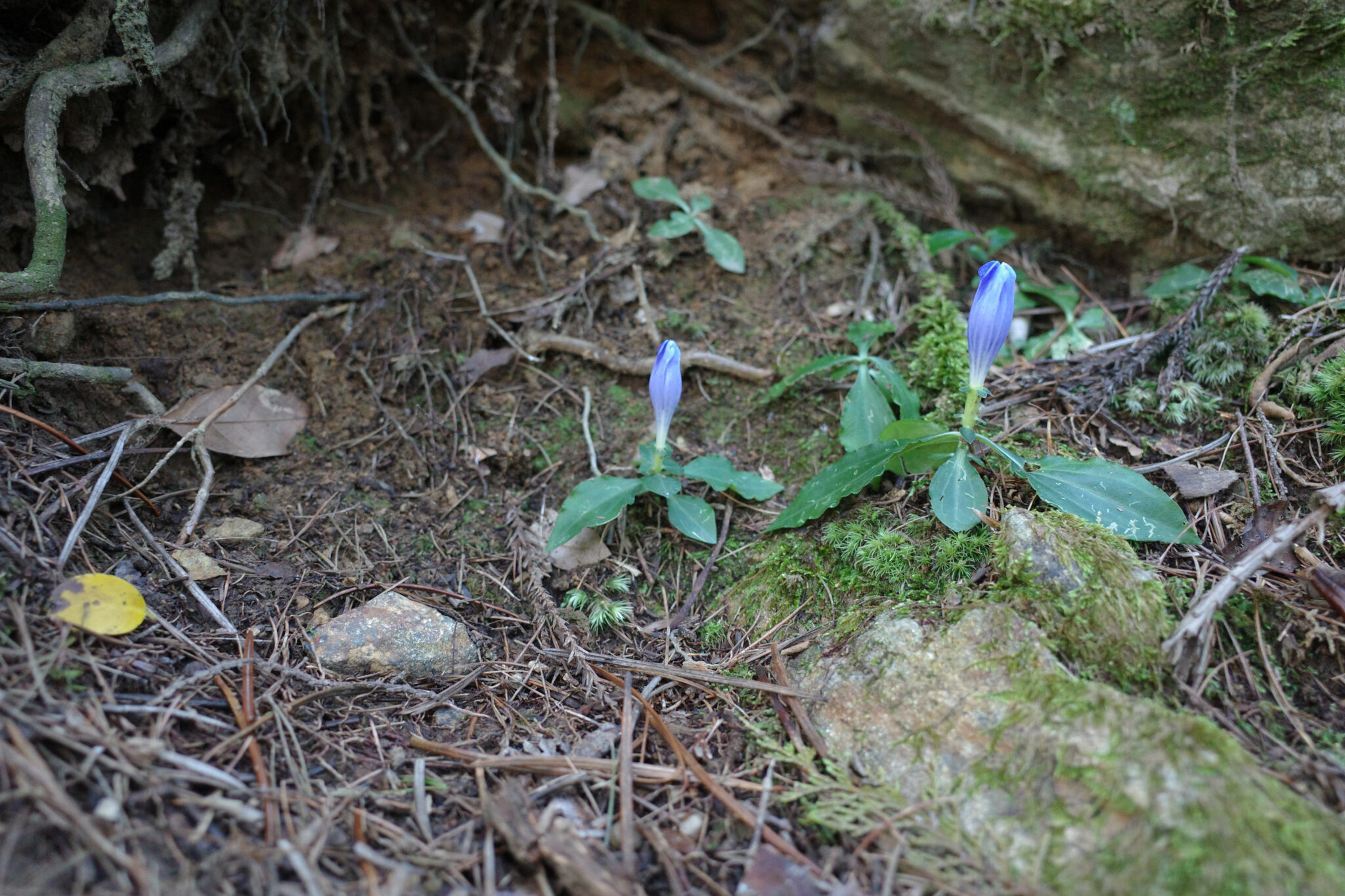
I hastily unpacked all my things, brushed off all the ants I could find, and repacked. There were hundreds of the things but luckily they weren’t biters. I hit the trail at 6.45 am.
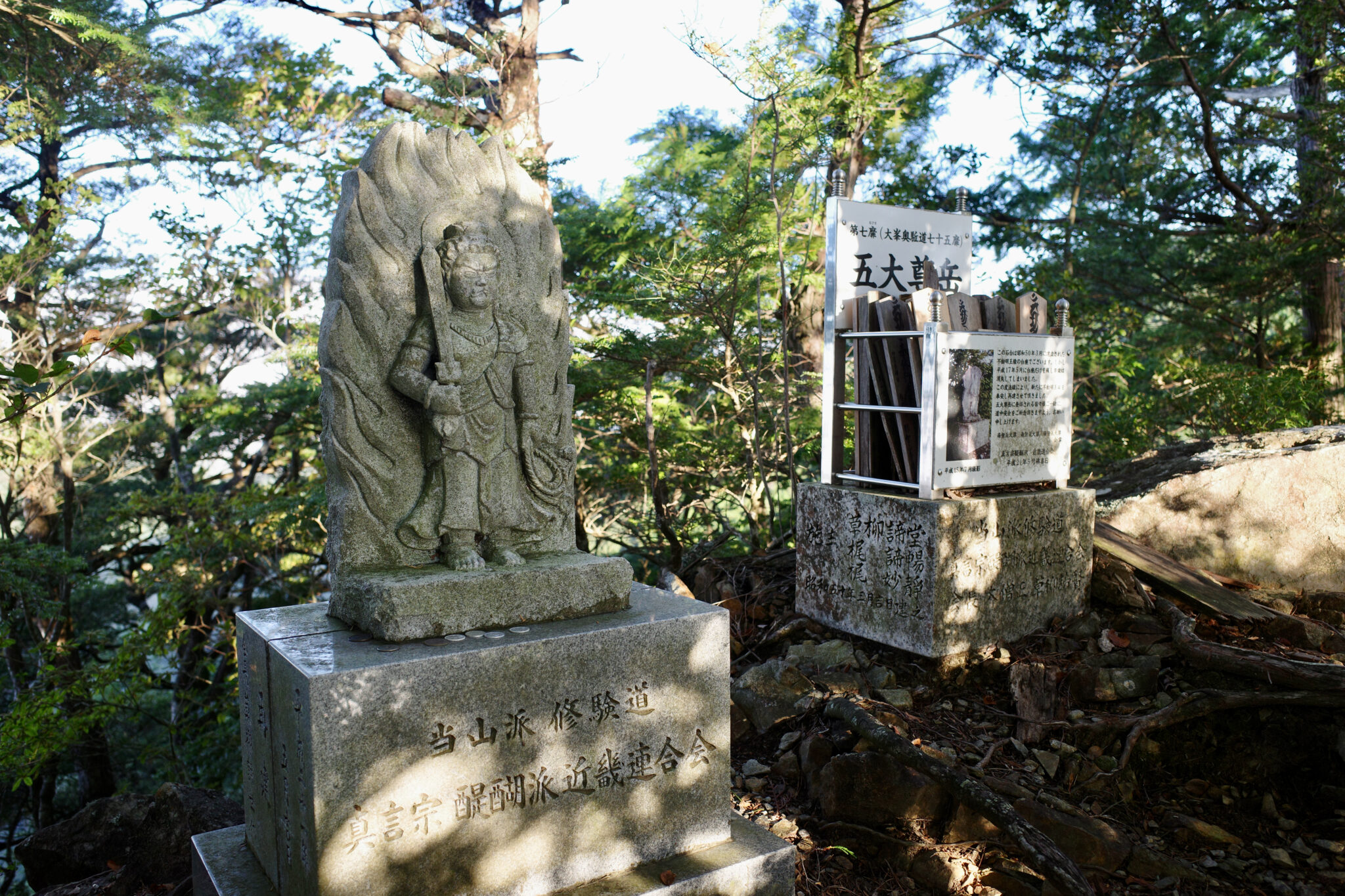
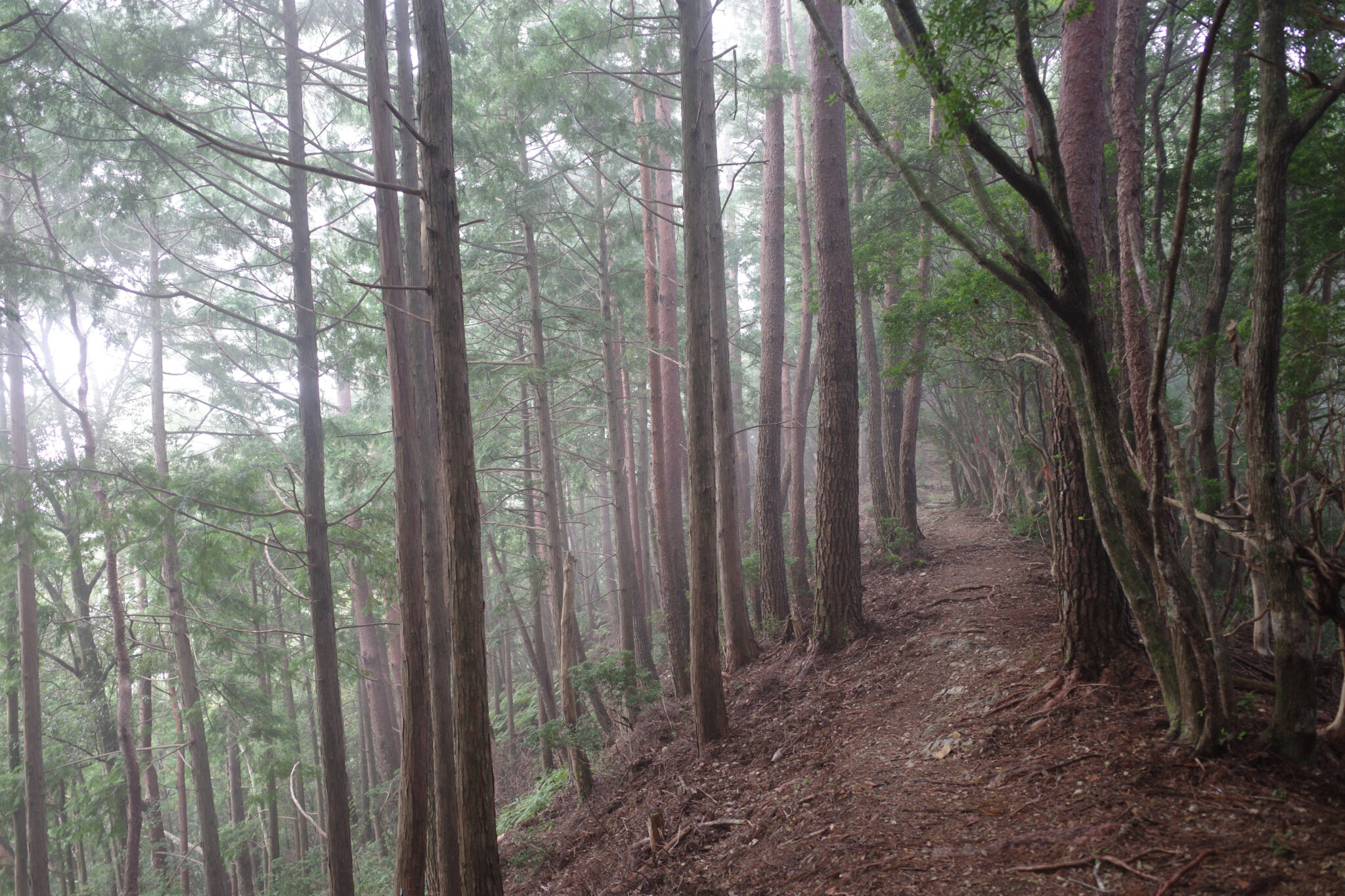
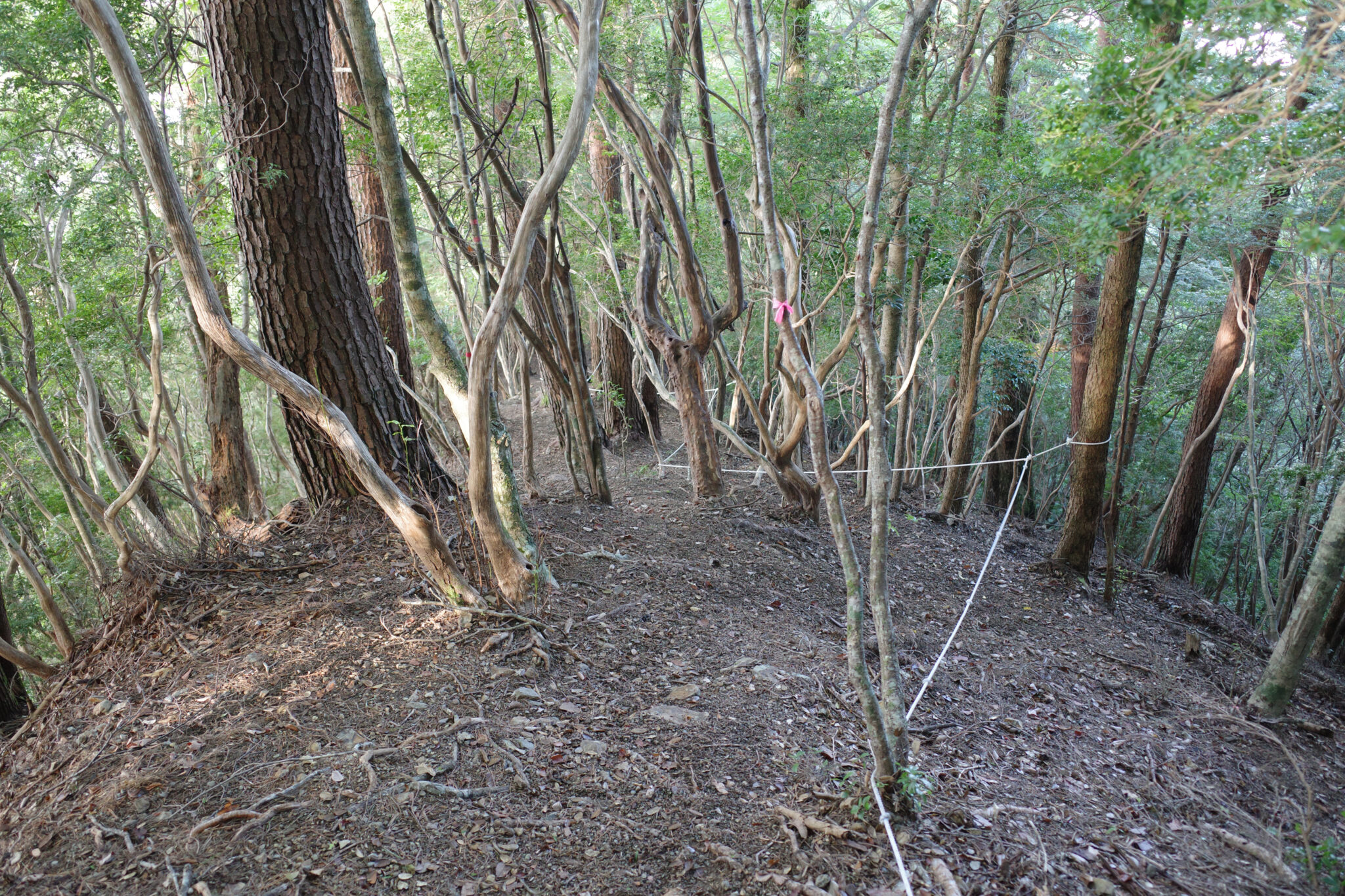
Although the going was still up and down, it had definitely become more of the latter for a change. Whoever maintains this part of the route has added miles of ropes which is helpful but also unsightly and a bit unnecessary given the shallow gradient.
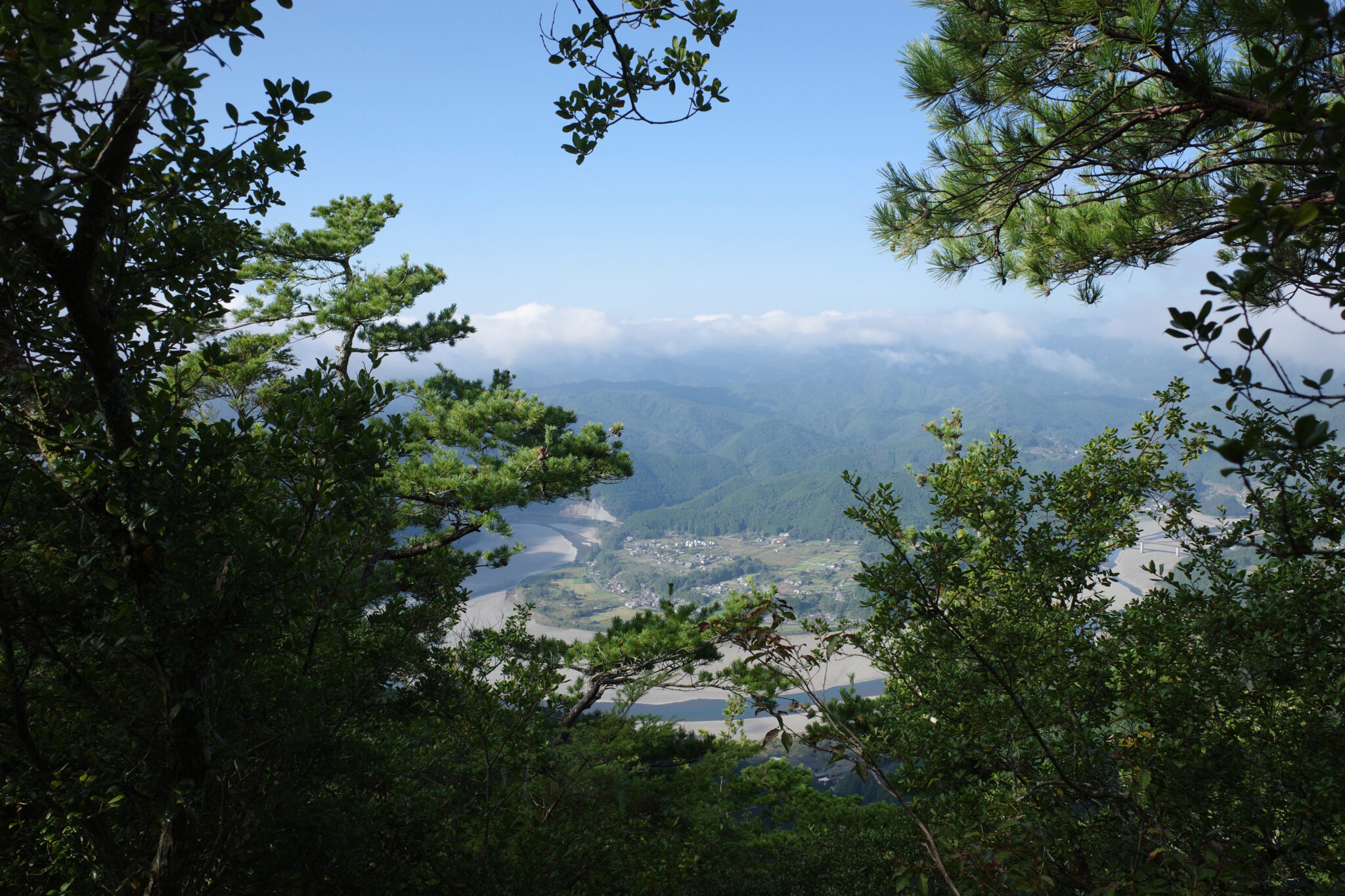
On the way down I started to get glimpses of Hongu (本宮町) through the trees. The valley below was familiar since I had twice visited the area when walking the Kohechi trail in the past. Spurred on by the prospect of a shower and a hot meal my pace increased.
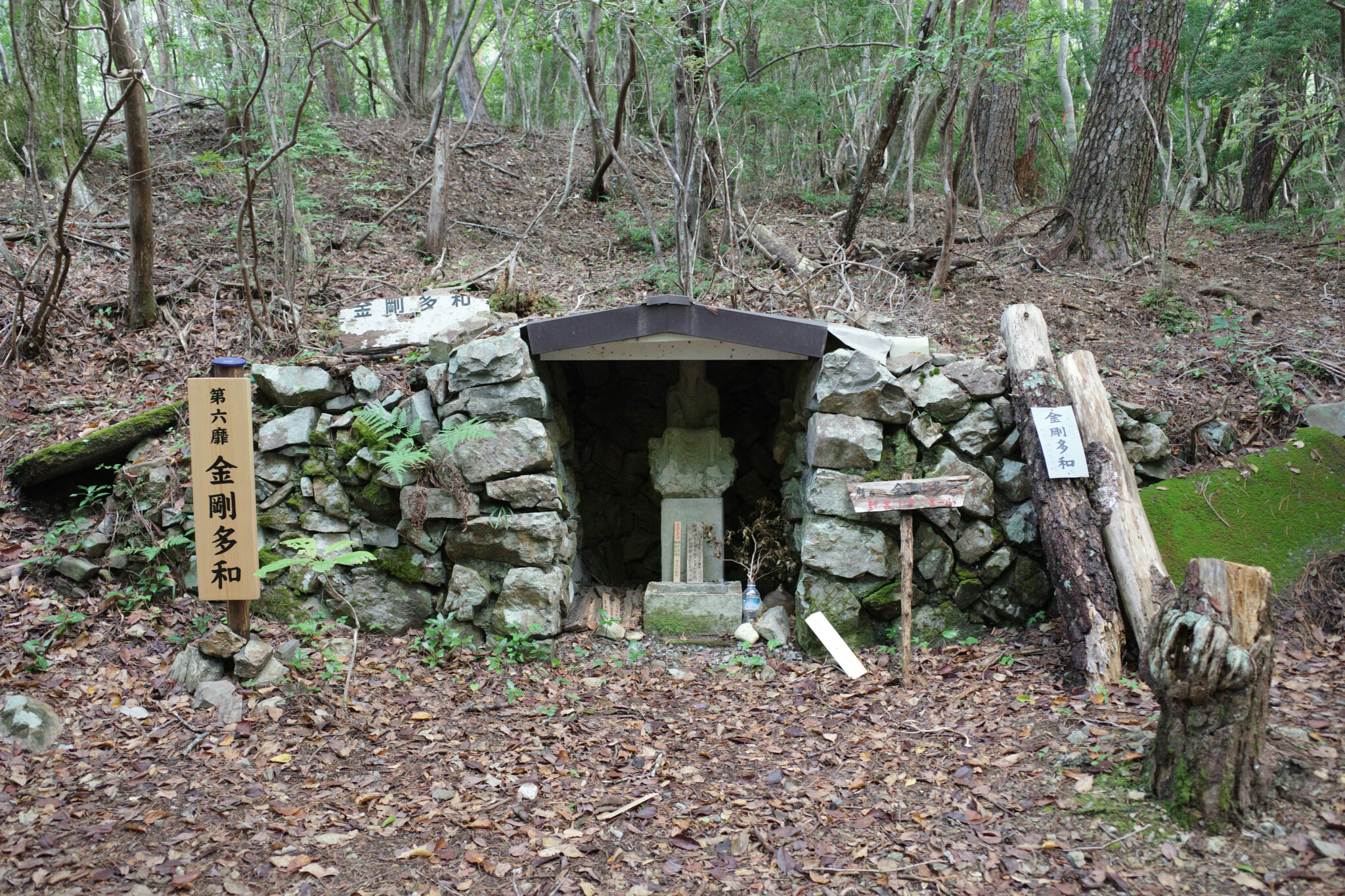
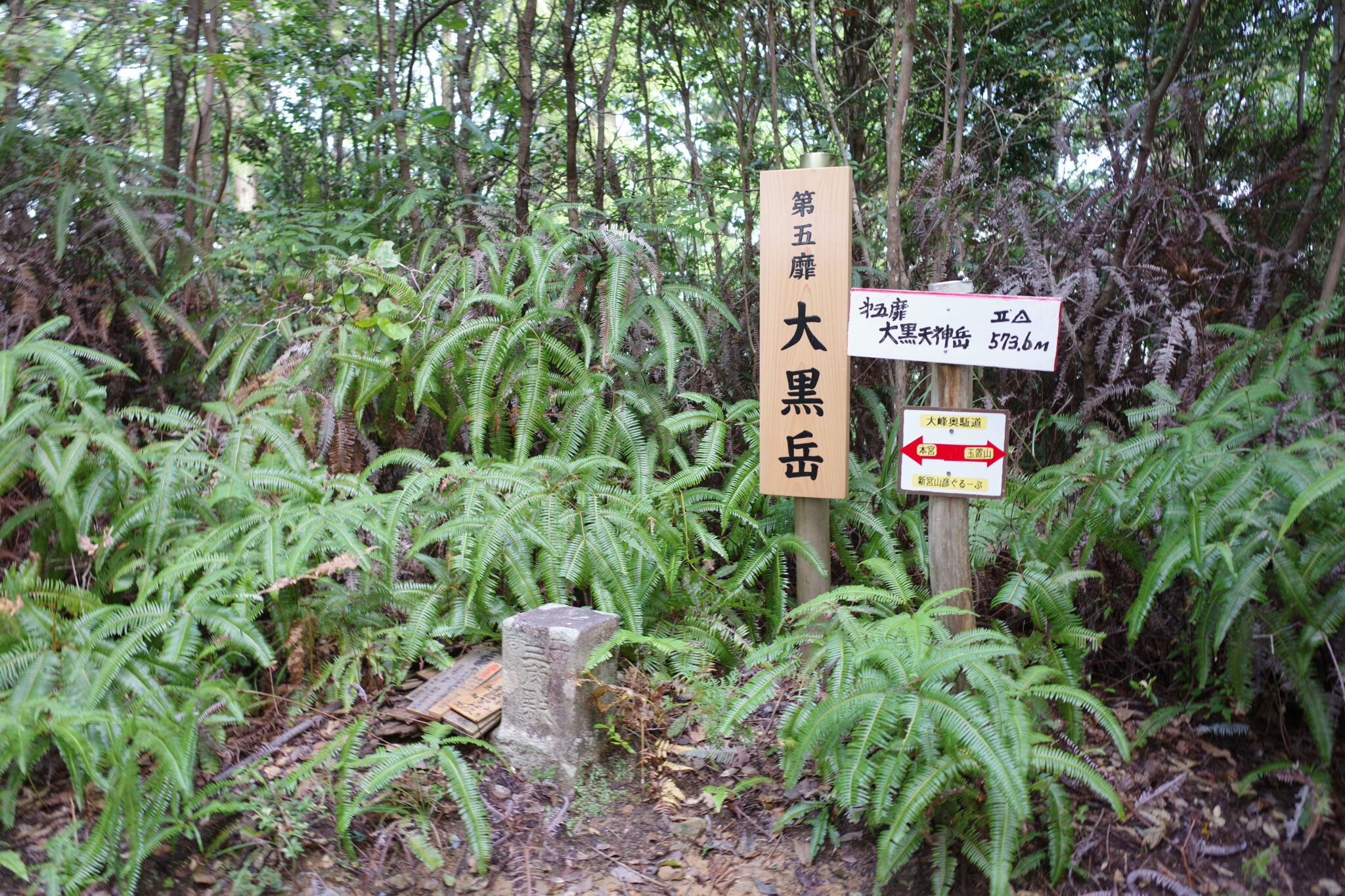


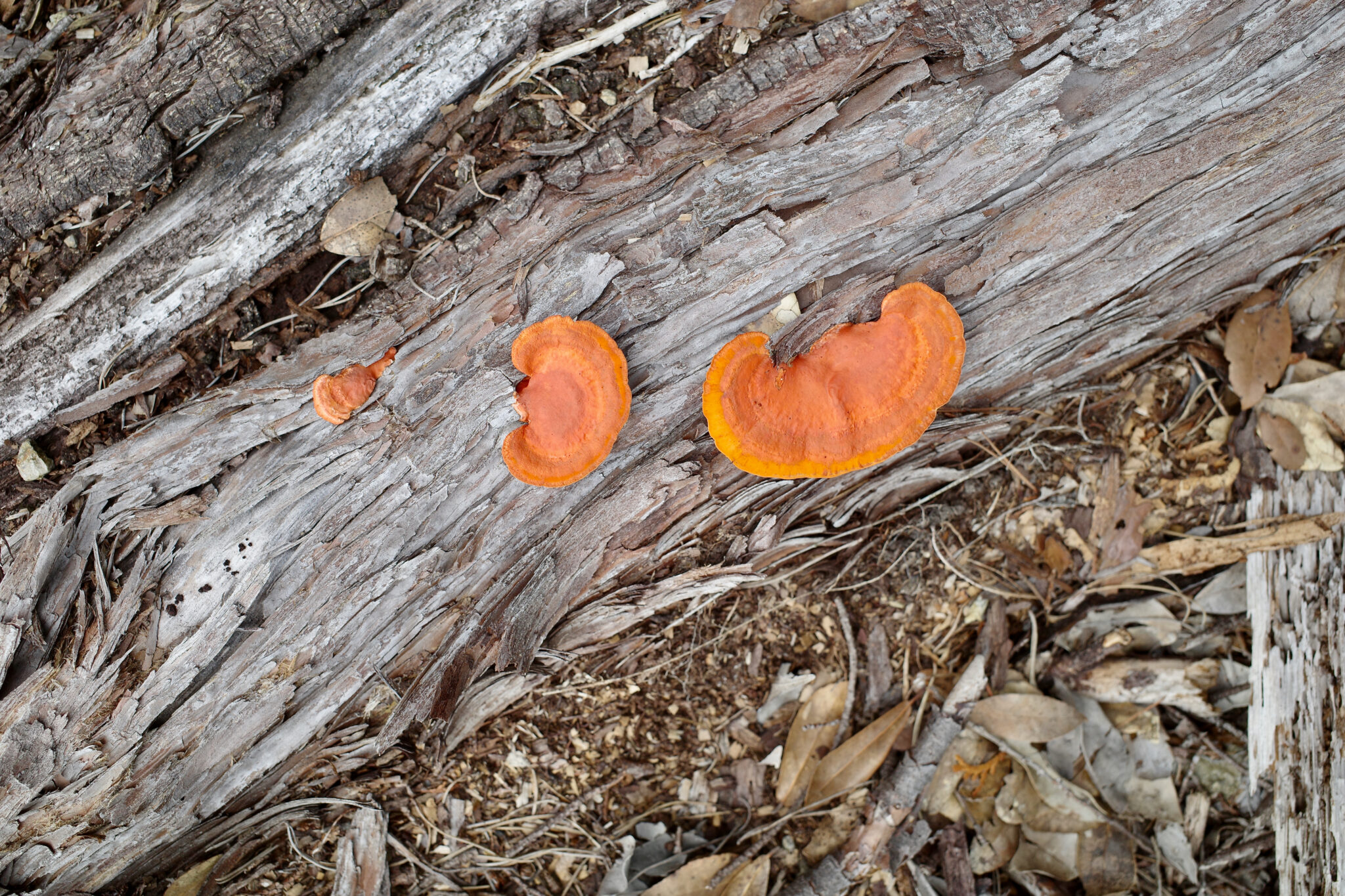
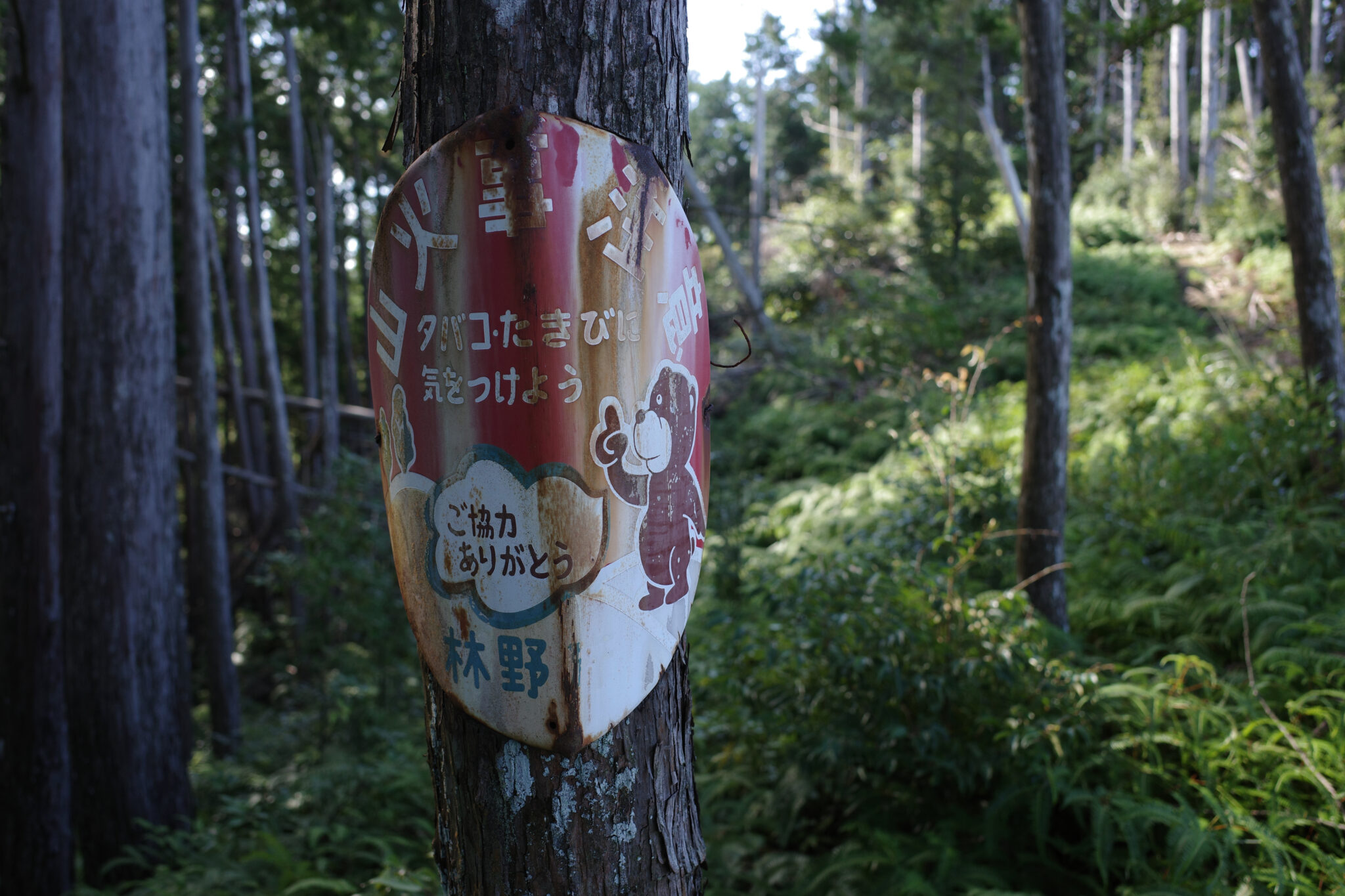
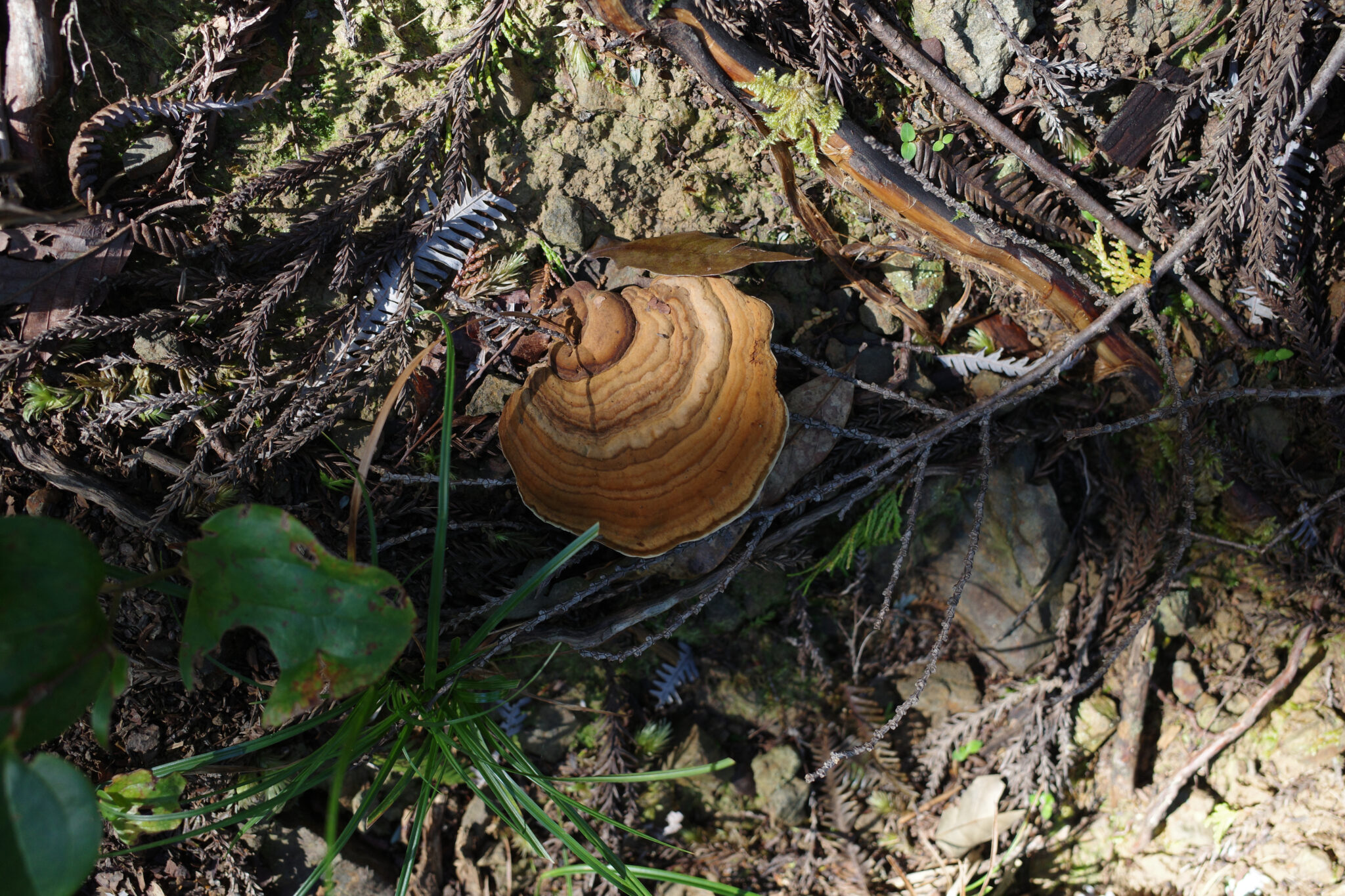
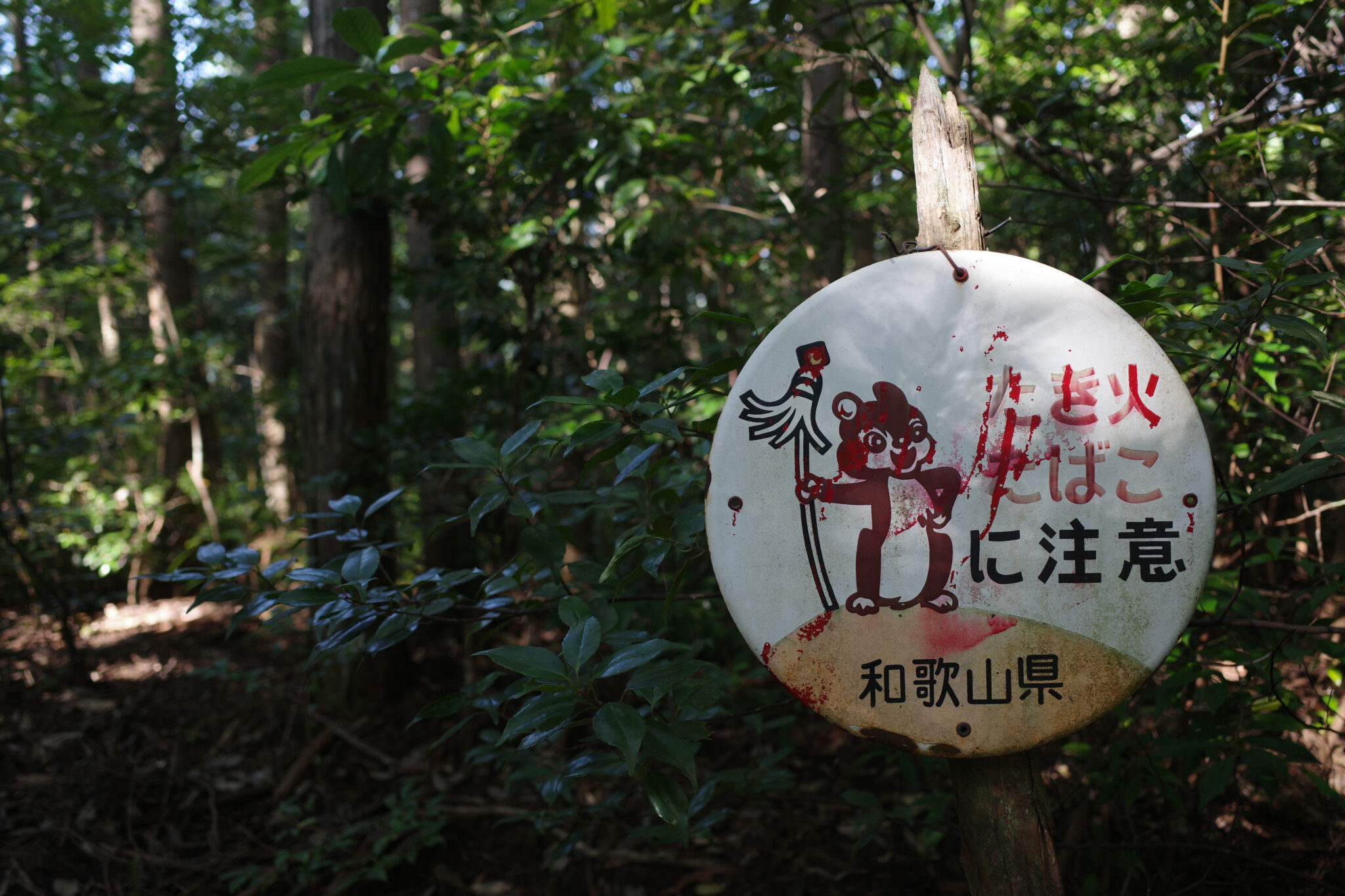
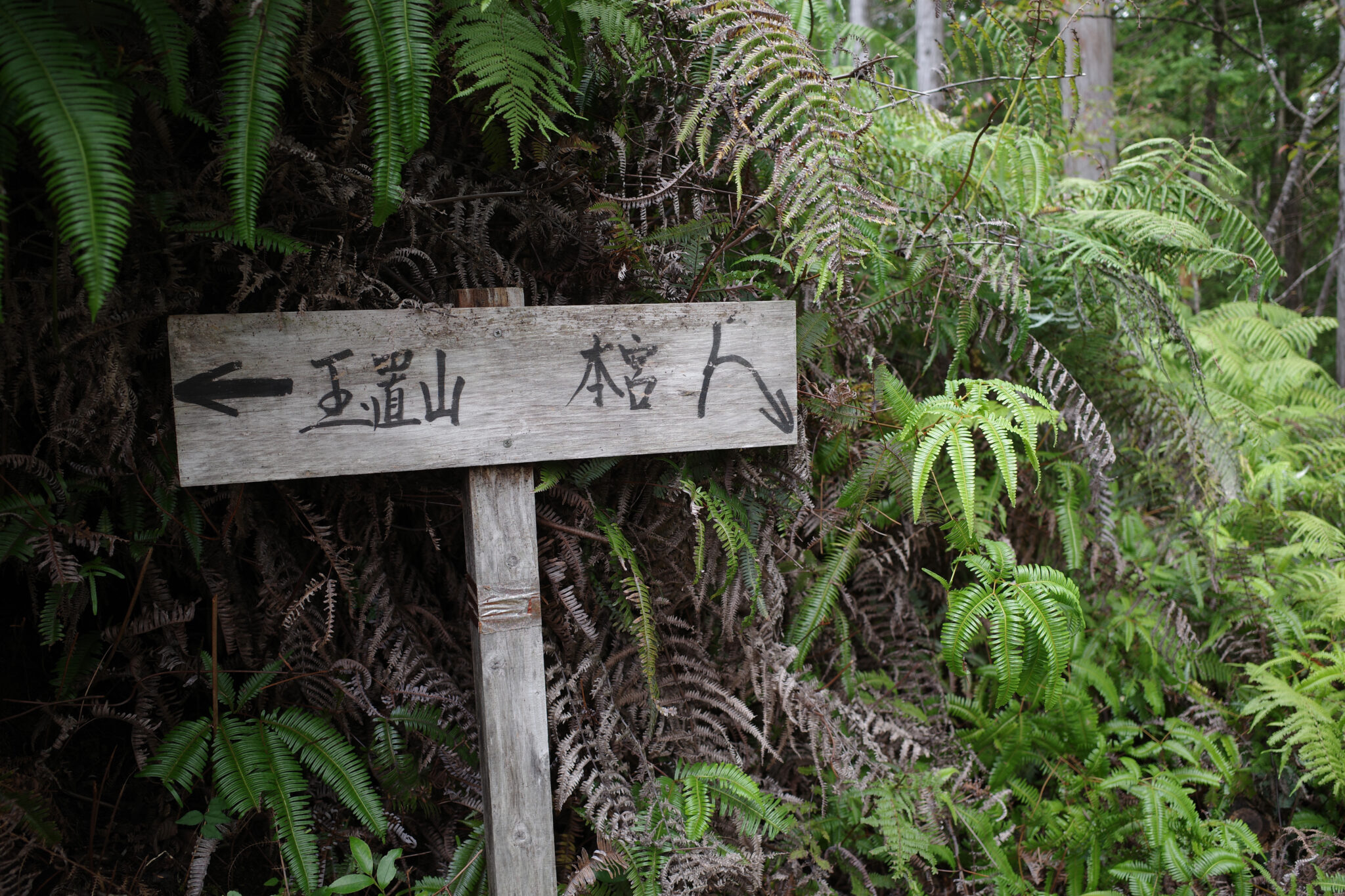
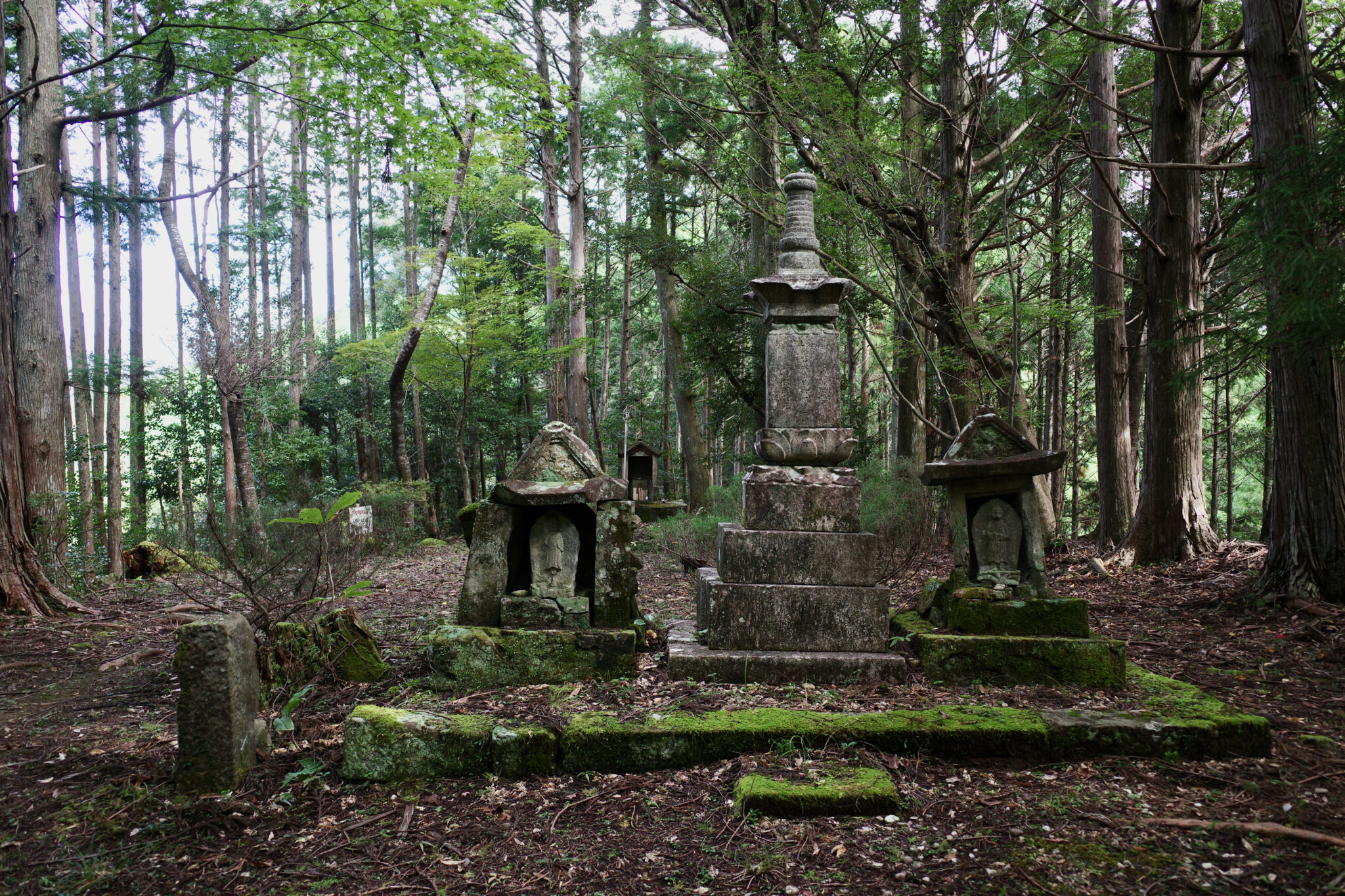
On the walk down, I passed numerous small stone statues and shrines, not to mention all manner of colourful fungi growing on dead trees.
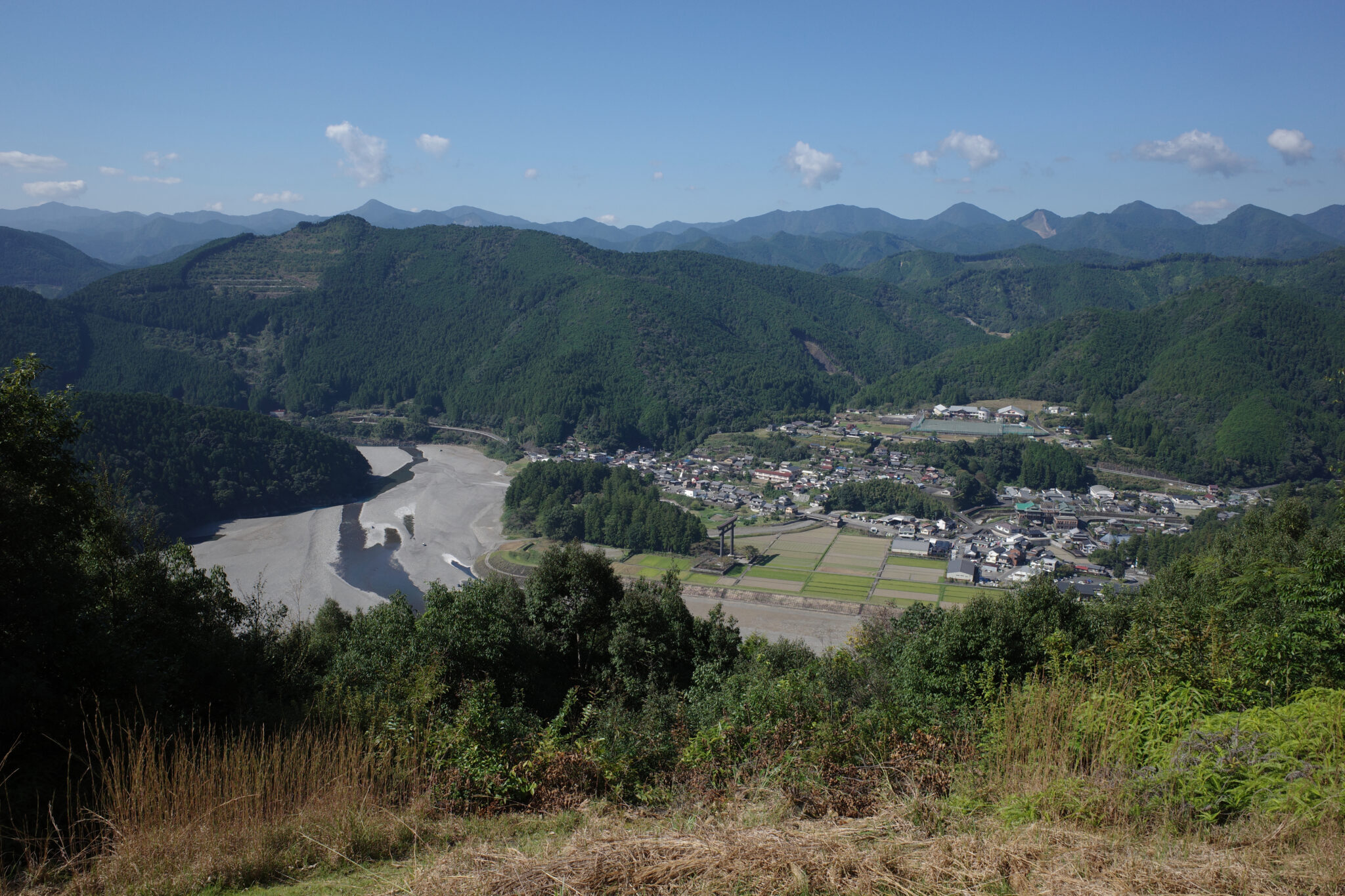
With my stomach grumbling, I stopped at a viewpoint to eat some delicious mackerel jerky at 10 am looking down at Oyu no Hara (大斎原), the largest torii (shrine gate) in Japan. The end was now tantalisingly close.
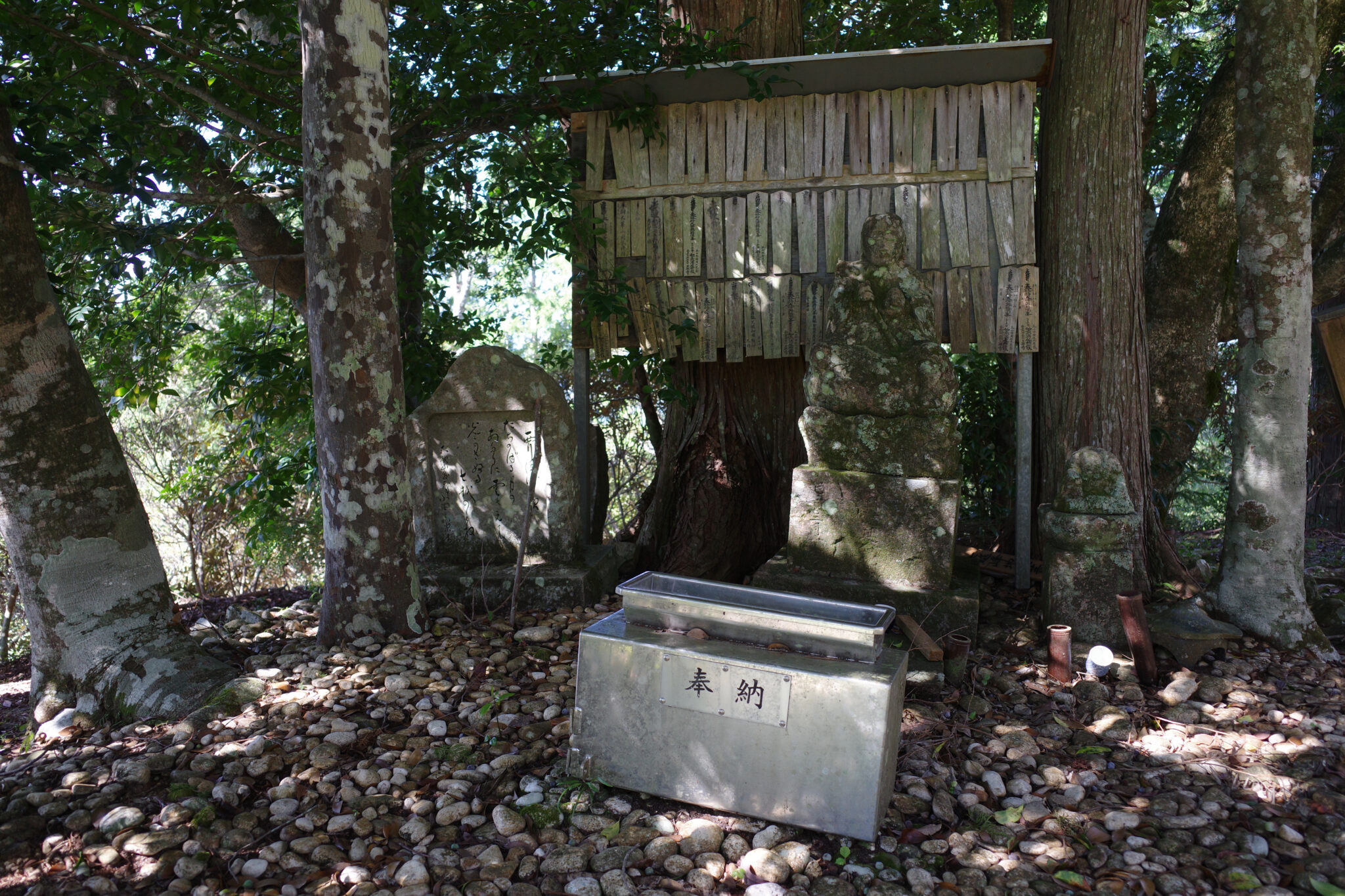
For the last leg of the journey, you join the Nanakoshi Range (七越峯), a trail that leads from Nankoshi-mine Park down to the Kumano River (熊野川).

On the way down you pass the Sonaezaki Kyozukagun (備崎経塚群), a group of around 40 sutra mounds (経塚) that date back to the Heian period through the Kamakura period. Excavations uncovered a large earthenware container, on which the engraved year of production was 1121.
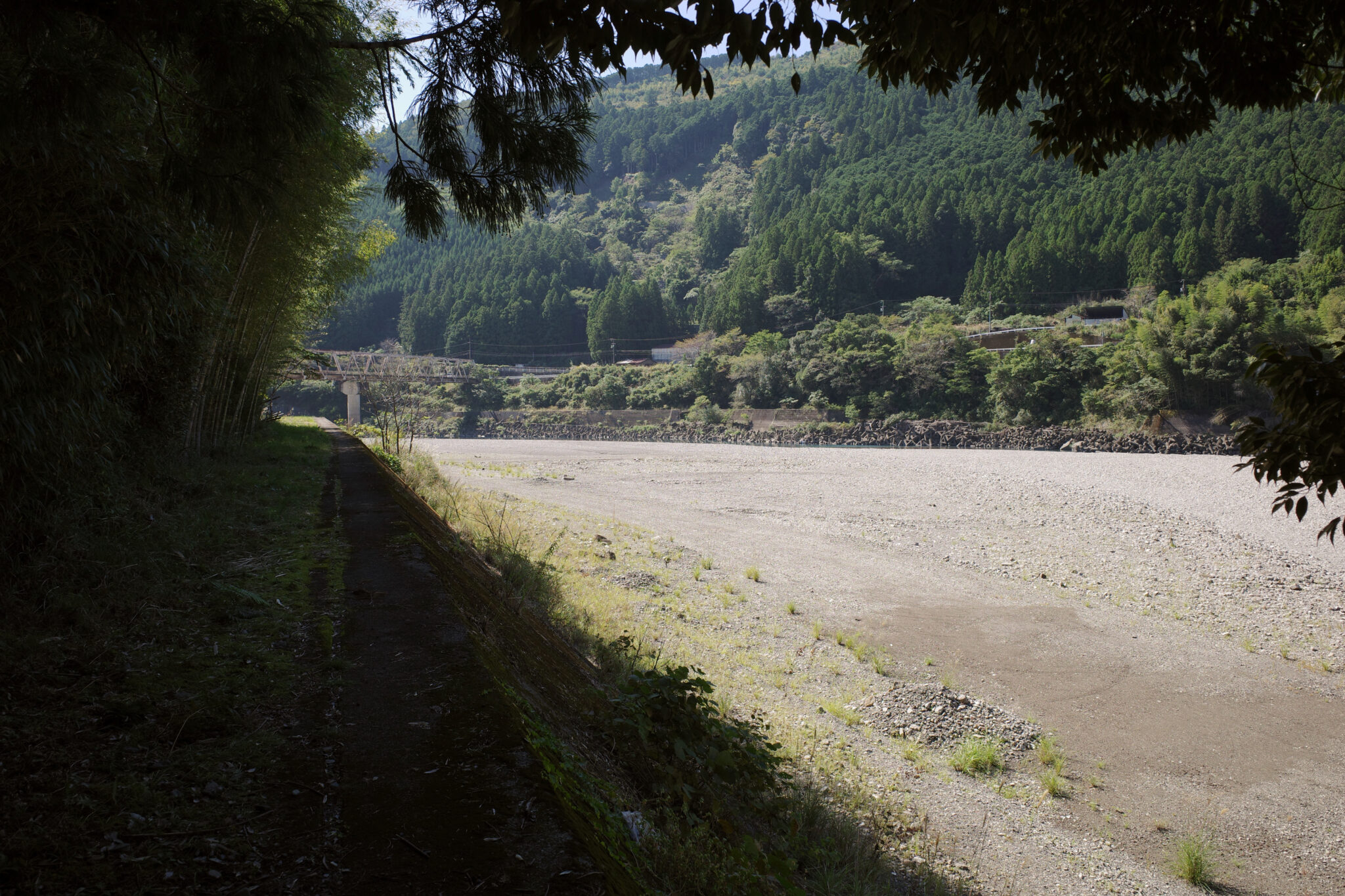
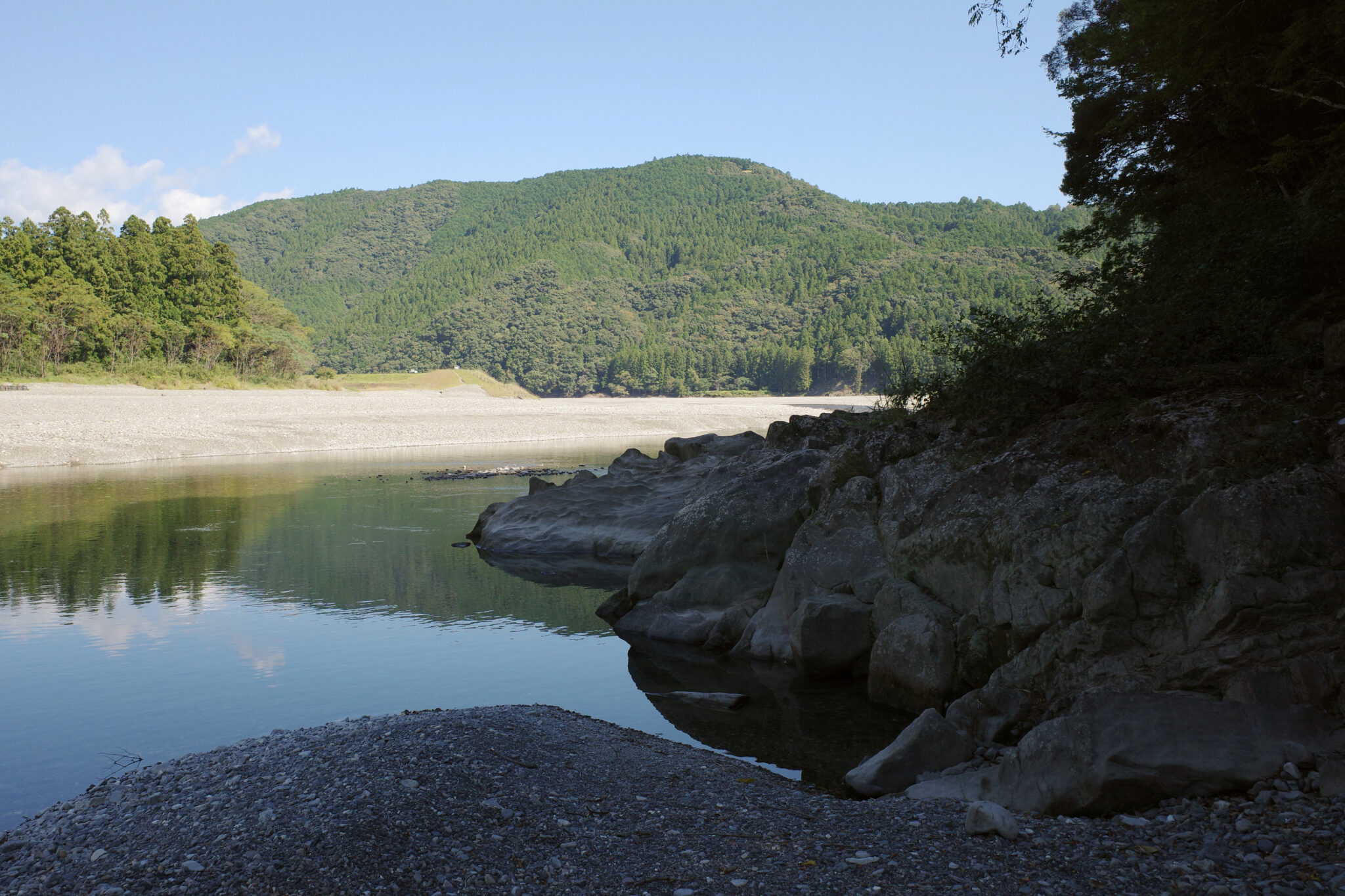
Stepping out from the shade of the trees onto the warm pebbles of the river bank felt like a momentous milestone after the previous week’s exertions. I half expected a Moses-like parting of the waters but instead, the only people to witness my crossing were a few bored fishermen.
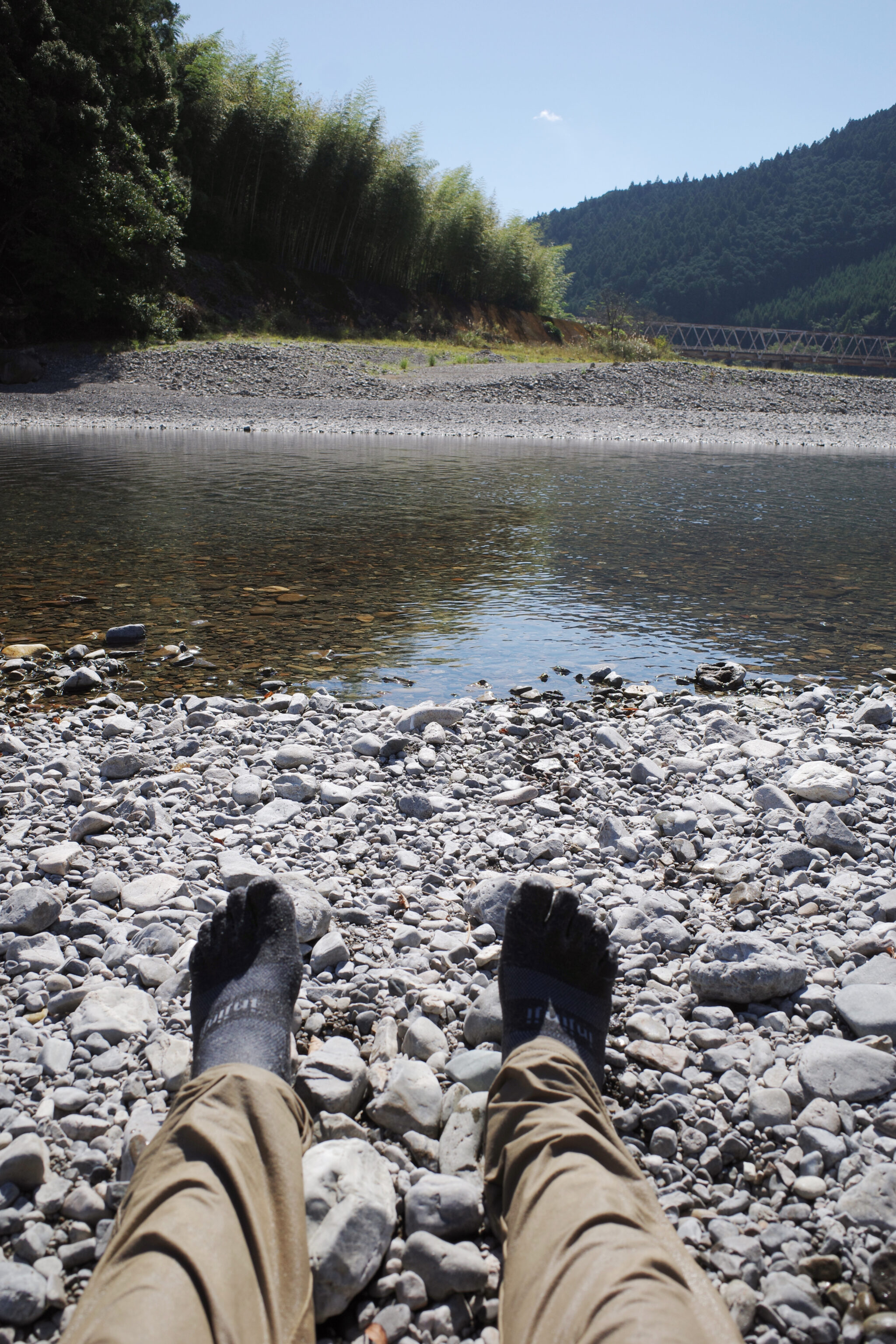
You can cross the Kumano River either by bridge or the traditional way, on foot. Given the water was crystal clear, slow-moving, and less than waist-deep I chose to roll up my trousers, take off my shoes and wade through!
River crossings can be dangerous. Don’t attempt it unless conditions are ideal and you know what you’re doing.
I collapsed on the opposite bank to dry my feet and check the time. It was only 11.30 am.
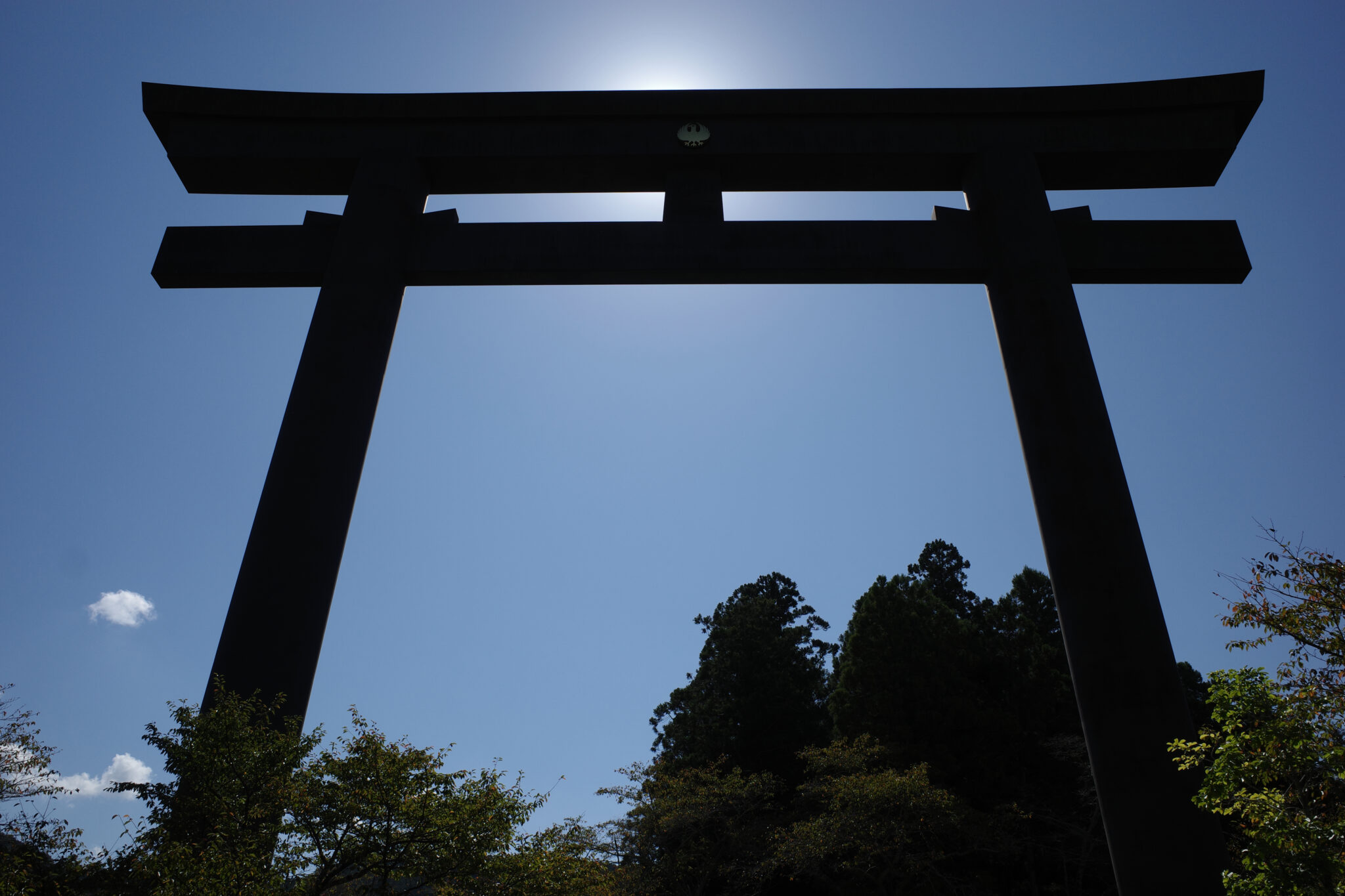
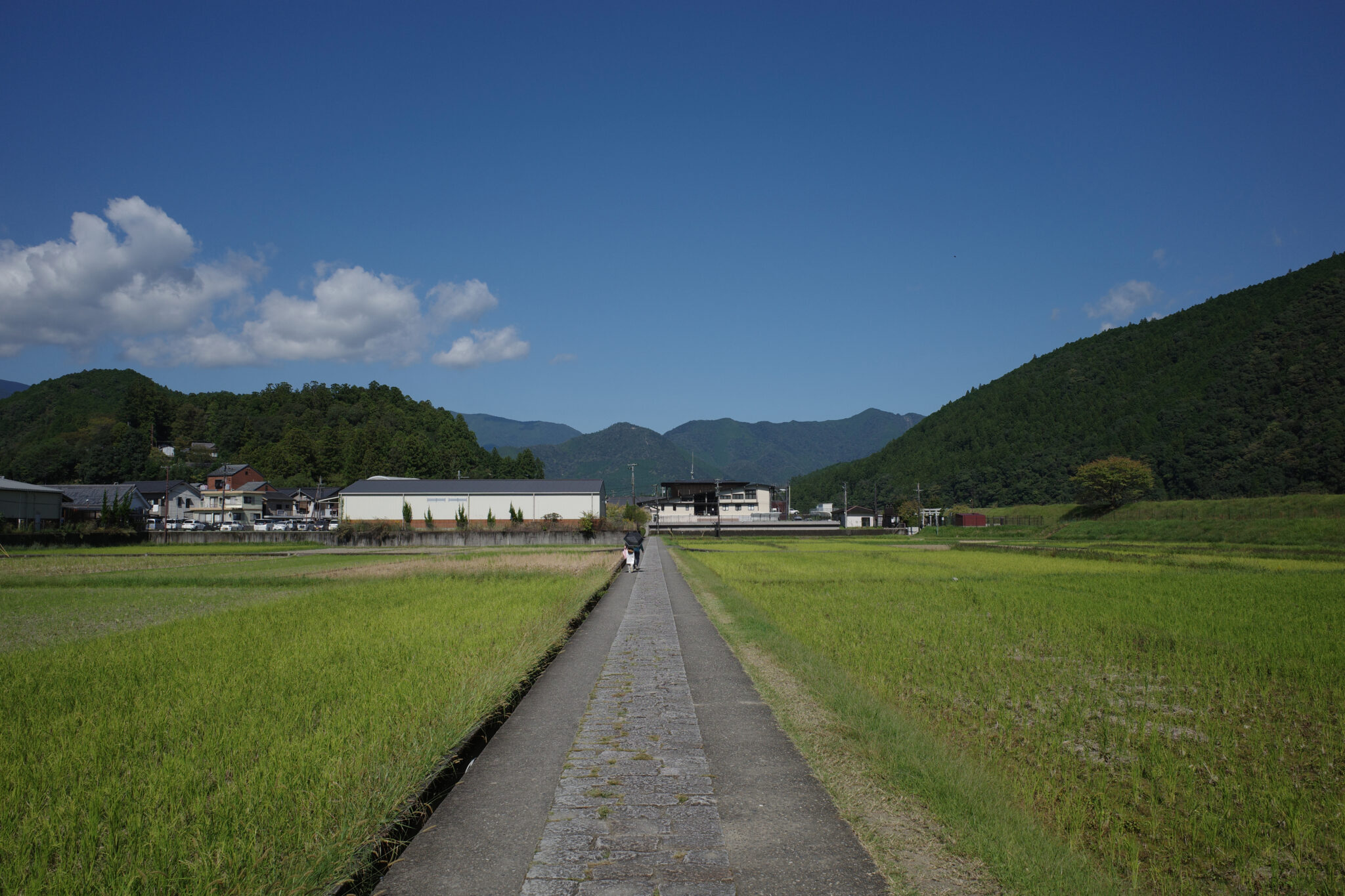
I walked the short distance to the towering Oyu no Hara torri gate which was the original location of Hongu Taisha until it was moved in 1889 to its present site one kilometre away due to flooding.
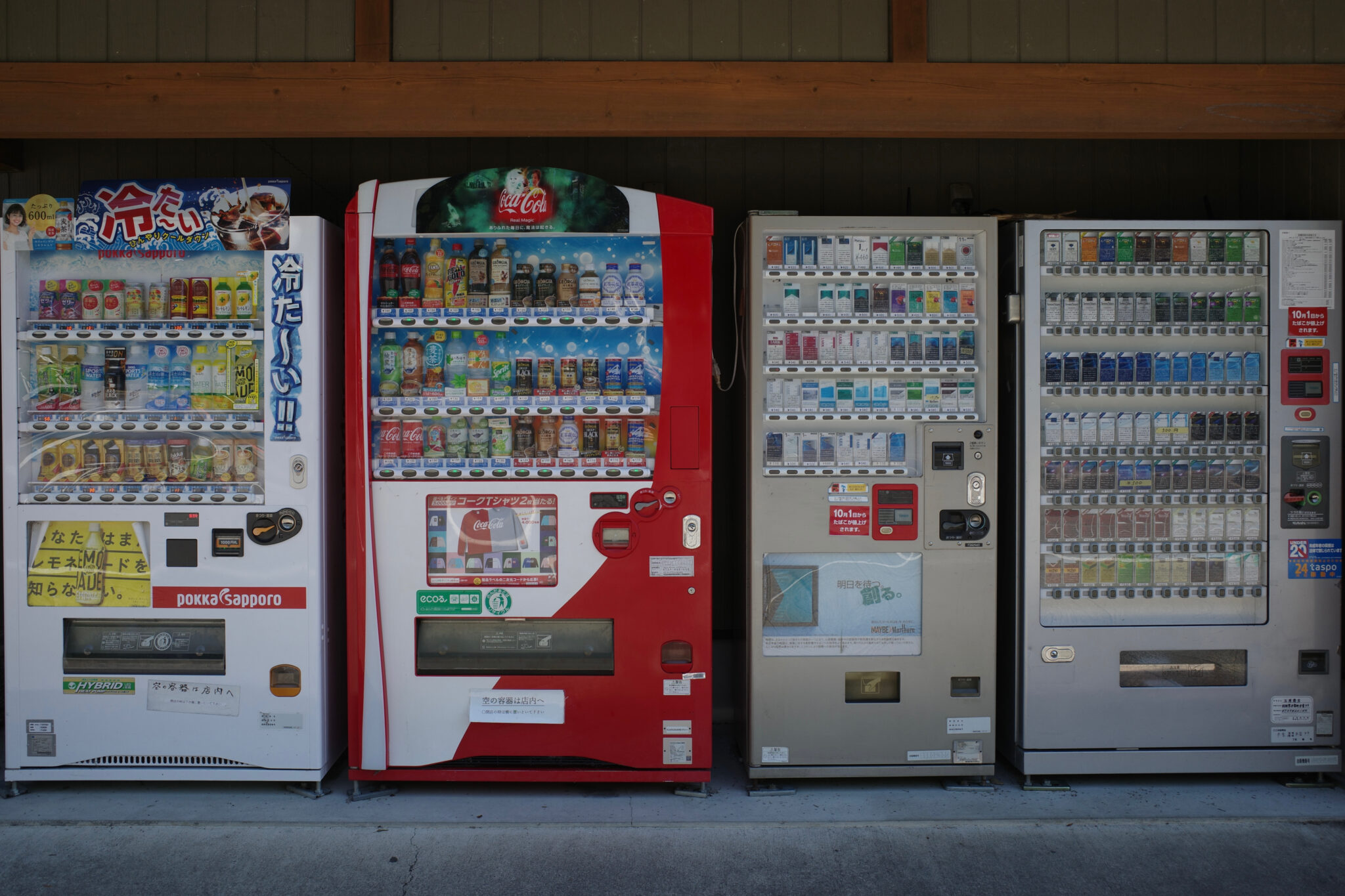
Like a beautiful mirage, a small cluster of vending machines came into view. I fumbled for some coins in my bag to feed the mechanical saviour. A Coke Zero was duly delivered into my hands and I almost choked as the ice-cold liquid hit the back of my throat. I could have cried!!
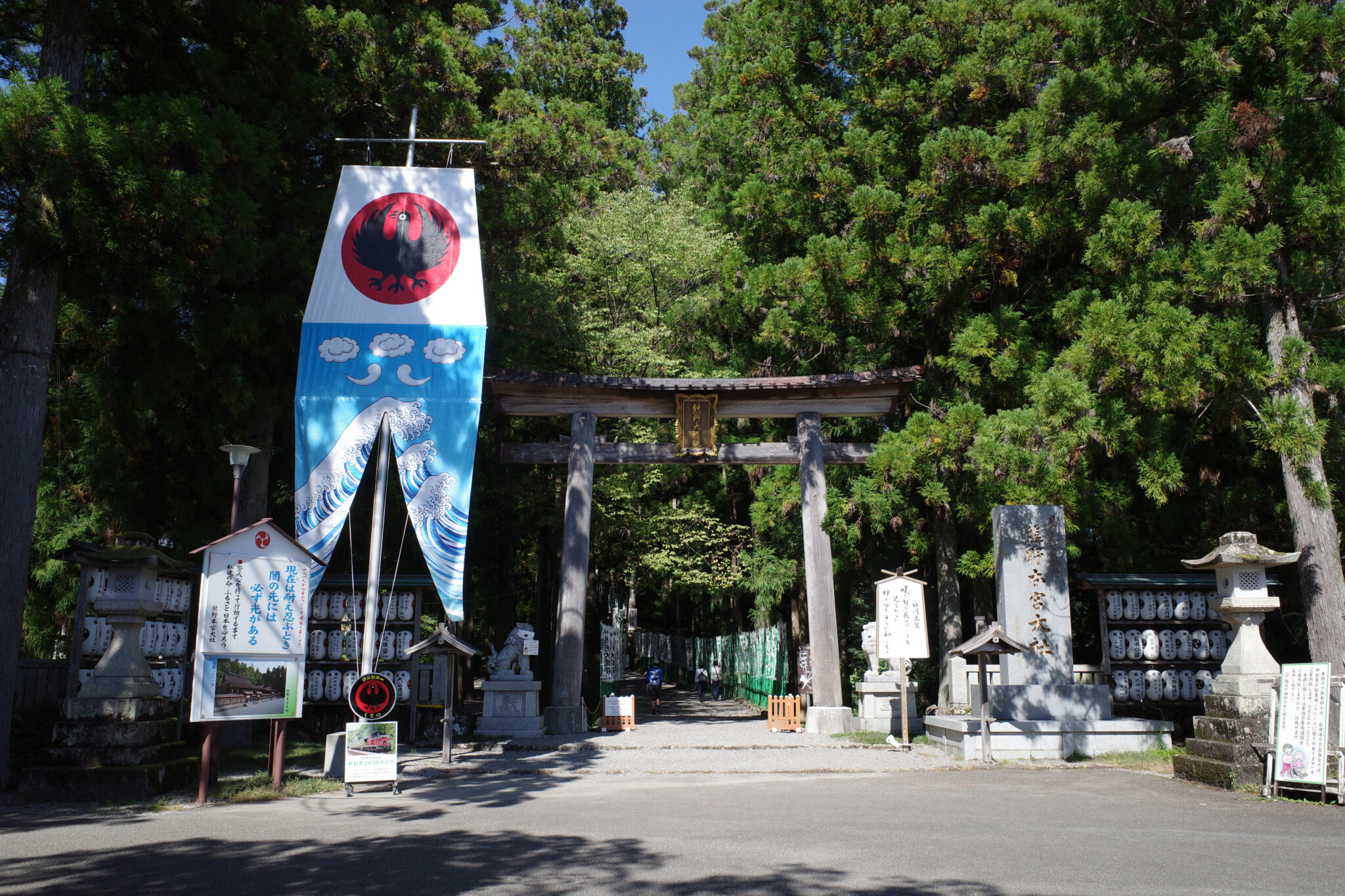
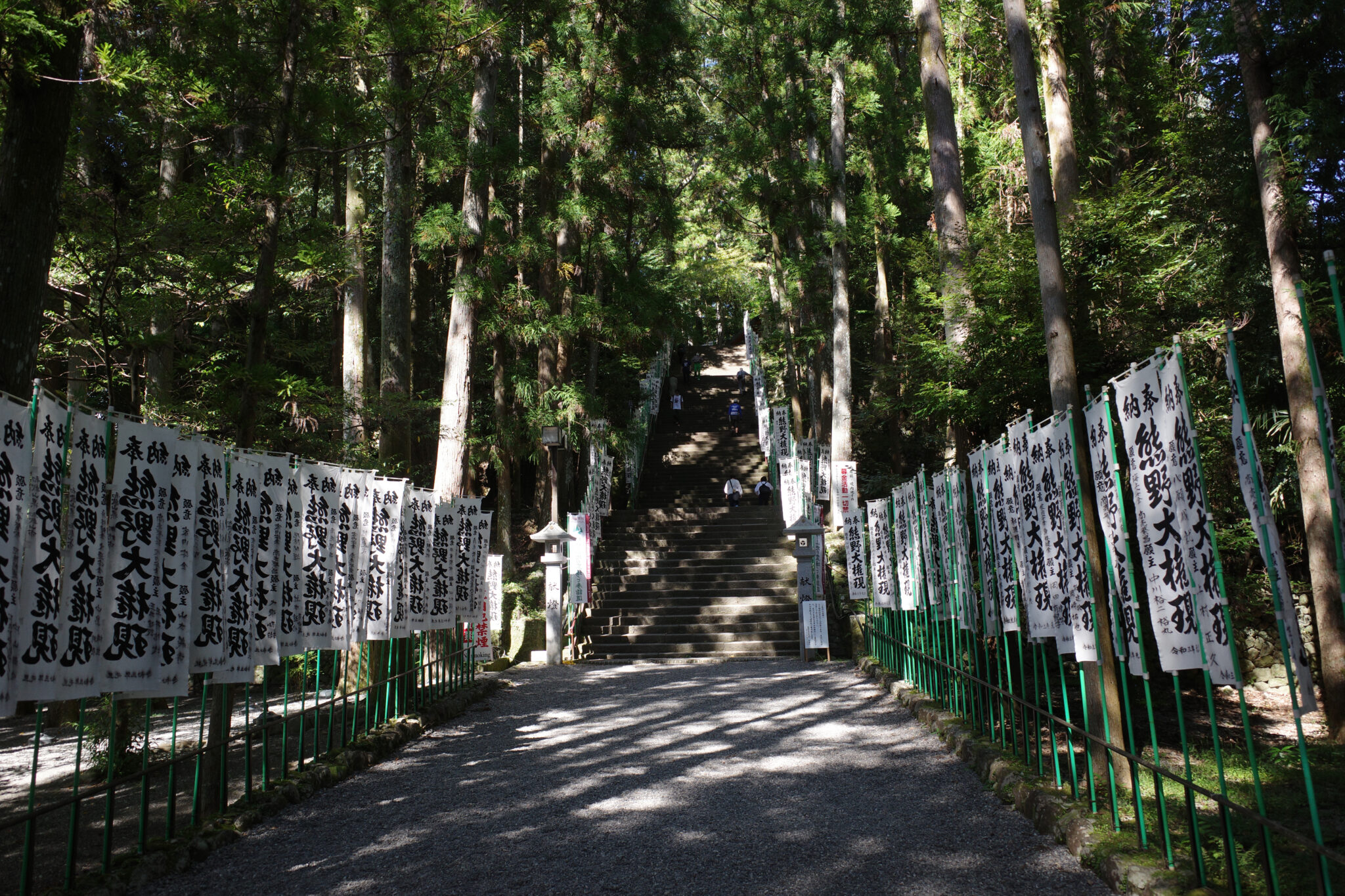

It was then time for me to pay my respects at Kumano Hongū Taisha (熊野本宮大社). I’d been here twice before so didn’t linger for long and was feeling pretty self-conscious about the state of dishevelment I was in. It’s an extremely beautiful and fitting place to end the journey.
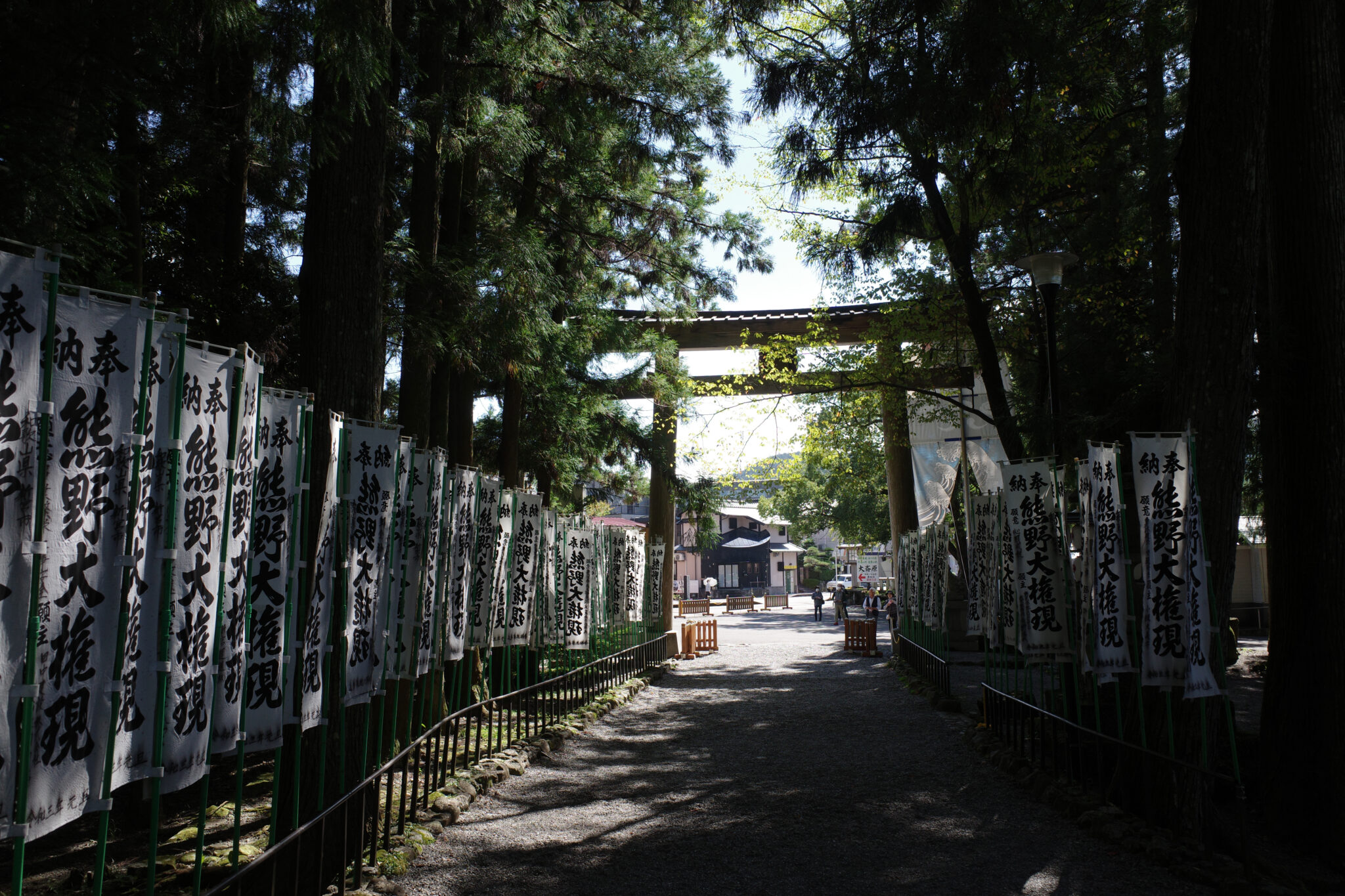
I’d booked a night at Kumano Backpackers (洋室), a guesthouse right next to the shrine since I wasn’t sure what time of day I would be arriving. It turned out to be run by a man who was a Shugendō practitioner himself and walked the Omine Okugake multiple times each year.
After a shower and a meal at the adjacent cafe run by the guesthouse, I was a whole new man and went about washing my clothes else I’d have nothing clean to wear for the journey home the following day. Later in the afternoon, I wandered over to Sosei no Yu (蘇生の湯) to soak my tired bones in the public baths.
Strangely, despite my fatigue and the comfortable bed, I found it hard to sleep that night. I think I was still on a high from completing the adventure.
Prologue
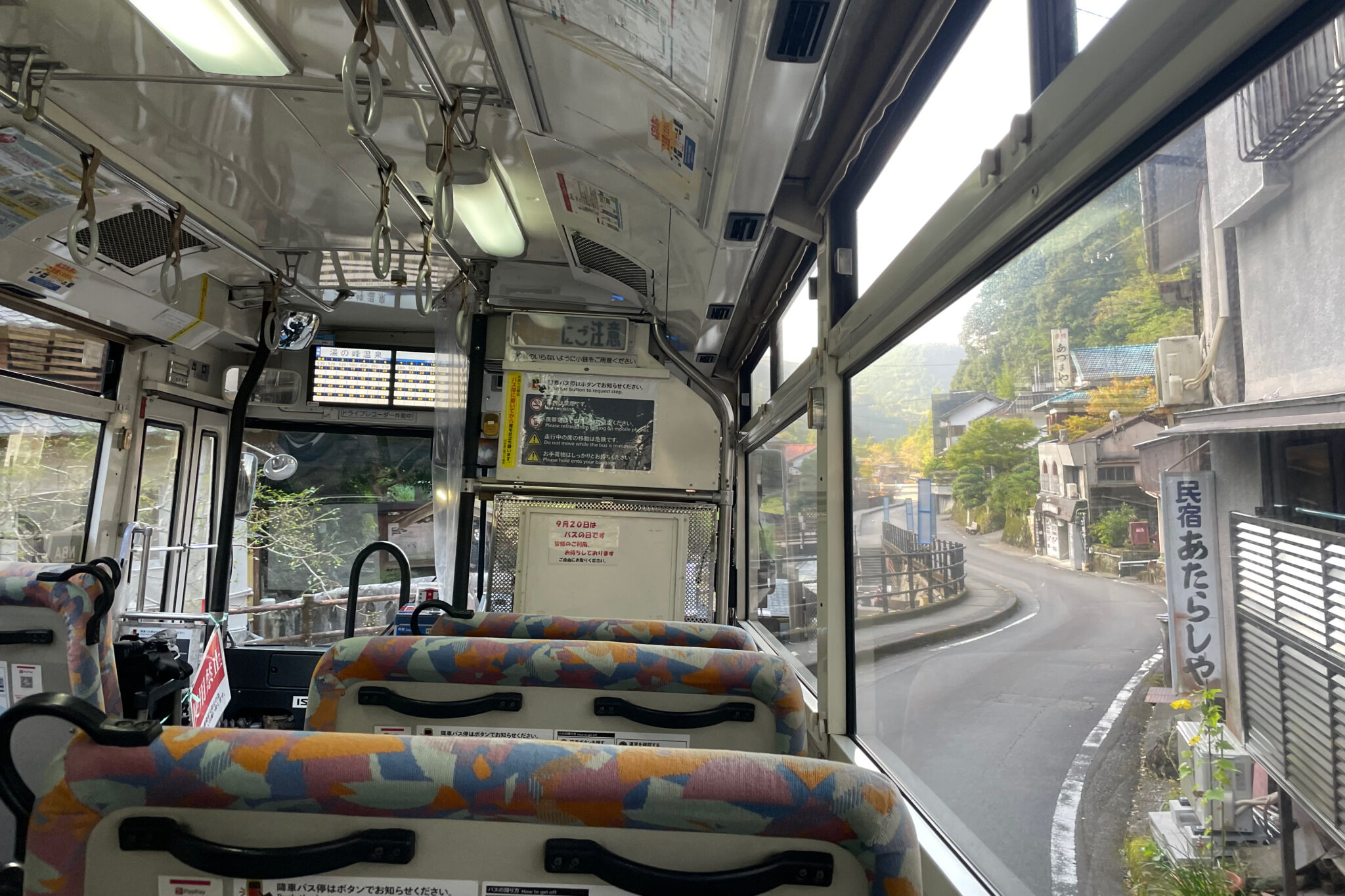
The following morning a bus and a number of trains whisked me back up the coast towards Osaka. Like coming up from the depths of the ocean for air, it’s a strange experience to be thrust back into civilisation. Part of me wanted to stay a bit longer in the mountains but an even louder part wanted to get back to the comforts of home.
Whilst I probably won’t walk the Omine-okugake Michi again, I wish I could have taken it a touch more slowly. The fear of the unknown often pushes one to hurry and you end up missing some of the finer details.
When all was said and done, it felt great to have pushed my limits and walked away with only two fewer toenails! The walk felt like an appropriate bookend to the last five years of exploring the Kumano Kodō pilgrim trails which offer nature, history and culture in abundance. These are experiences I will treasure for a lifetime.



Reply